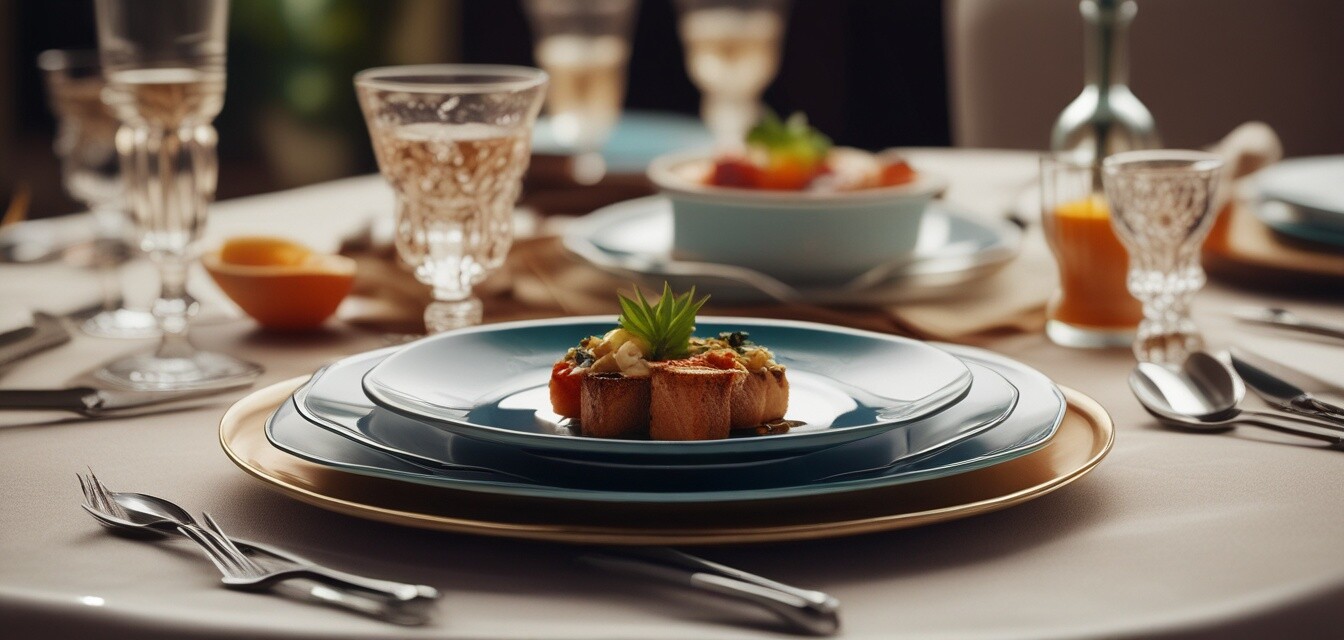
Mastering the Art of Plating
- Proper plating enhances the visual appeal of your food.
- Consider color, texture, and shape when arranging dishes.
- Use garnishes creatively to elevate your presentation.
- Practice different plating techniques to refine your skills.
- Invest in quality tableware and serveware for a polished look.
Plating is often considered the final frontier in cooking—a chance to reflect your culinary prowess through the artful presentation of your dishes. Whether you're preparing for a dinner party or a casual family meal, mastering the art of plating can transform your culinary creations into stunning visual experiences. Let's explore key techniques for beautifully plating your dishes to impress your guests and enhance dining experiences.
The Importance of Plating
Great plating not only makes dishes more visually appealing, but it also influences how we perceive tastes and flavors. A well-presented plate can elevate the dining experience and stimulate the appetite. Here are a few reasons why proper plating matters:
- Visual Appeal: Humans are highly visual creatures; well-plated food catches the eye and draws people in.
- Enhances Flavor Perception: The way food is arranged can alter our expectations and perception of taste.
- Creates Dining Experiences: Artistic presentations can make meals feel special and memorable.
Key Elements of Plating
When you begin your plating journey, consider these fundamental elements:
| Element | Description |
|---|---|
| Color | Use a variety of colors to create a vibrant and appealing plate. Pair contrasting colors for visual pop. |
| Texture | Incorporate different textures—crunchy, creamy, or smooth—to add depth to your dish. |
| Shape | Utilize different plate shapes and sizes to enhance the presentation and complement your food. |
| Balance | Aim for a balanced look by distributing elements evenly and avoiding clutter. |
Plating Techniques to Try
Here are some popular plating techniques that can help you create stunning food presentations:
- Stacking: Piling ingredients on top of one another adds height and interest to the plate.
- Negative Space: Leaving empty spaces on the plate draws attention to the food, letting it stand out.
- Fanning: Arranging components in a fan shape not only looks elegant but also maximizes presentation.
- Saucing: Drizzling sauce around the plate or over the food can add depth and flavor contrast visually.
Creative Garnishing Ideas
Garnishes can take your presentation to the next level. Here are some ideas:
- Fresh herbs like basil or microgreens.
- Citrus zest or finely chopped fruits.
- Edible flowers for a pop of color.
- Crumbled nuts or seeds for added texture.
Choosing the Right Tableware
Your choice of tableware significantly impacts the overall presentation of your meals. Follow these guidelines:
Tips for Selecting Tableware
- Choose plates that complement the colors of your dishes.
- Opt for simple tableware to let the food shine.
- Consider the shape of plates—round, square, or irregular—to enhance your presentation.
Practice Makes Perfect
Like any skill, the more you practice plating, the better you will become. Experiment with different styles, learn from culinary professionals, and let your creativity flow. Don't forget to check our related articles on cooking buying guides or culinary news & trends for more insights and techniques!
Pros
- Enhances overall guest experience.
- Encourages creativity in the kitchen.
- Makes meals feel special and memorable.
Cons
- Can be time-consuming if done meticulously.
- May require specific tableware and tools.
Conclusion
Mastering the art of plating can significantly elevate your culinary creations, transforming good meals into exceptional dining experiences. By understanding the basic elements and practicing different plating techniques, you can impress your guests and enhance your cooking. Don't forget that every masterpiece takes time and practice to refine. Enjoy the journey of becoming a better cook!